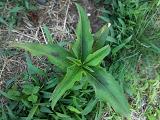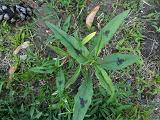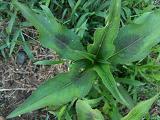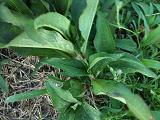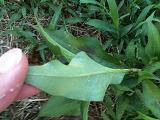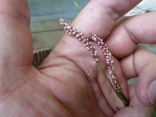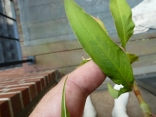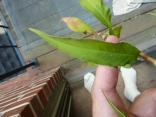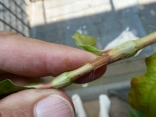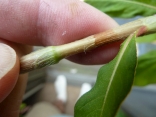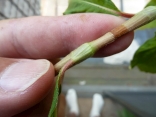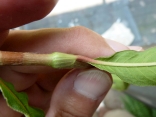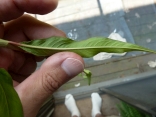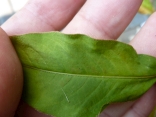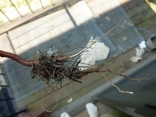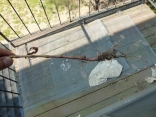|
September 14, 2010
|
Southeastern, New Hampshire
|
Spotted Ladysthumb in flower. As you can see, the spot on the leaf is somewhat faded, but can
be made out when enlarging the image. It looks a bit like a shadow now. At first glance, this
might be considered Curlytop Knotweed (Polygonum lapathifolium), but the ladysthumbs (Spotted
Ladysthumb (Polygonum persicaria) and Oriental Ladysthumb (Polygonum cespitosum))
both have spots on the leaves. In addition, they both have fringe hairs at the end of the ocrea (sheath
formed by the node of a stem and the two stipules). Curlytop Knotweed does not have a hairy fringe.
But in the first image you can see a hairy fringe that is less than the length of the sheath itself.
Oriental Ladysthumb has fringe hairs as long or longer than the sheath and also has cilia
(hairs) at the base of most of the tiny pink flowers that are longer than the flowers. Details can be
found on Missouri Plants web site for
Oriental Ladysthumb.
Due to the shorter fringe hairs and lack of cilia at the base of the flowers, these pictures are
of Spotted Ladysthumb.
|
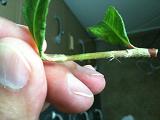
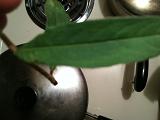
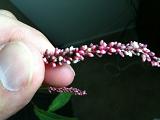
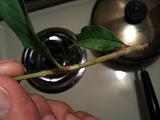
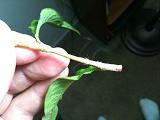
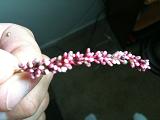
|
